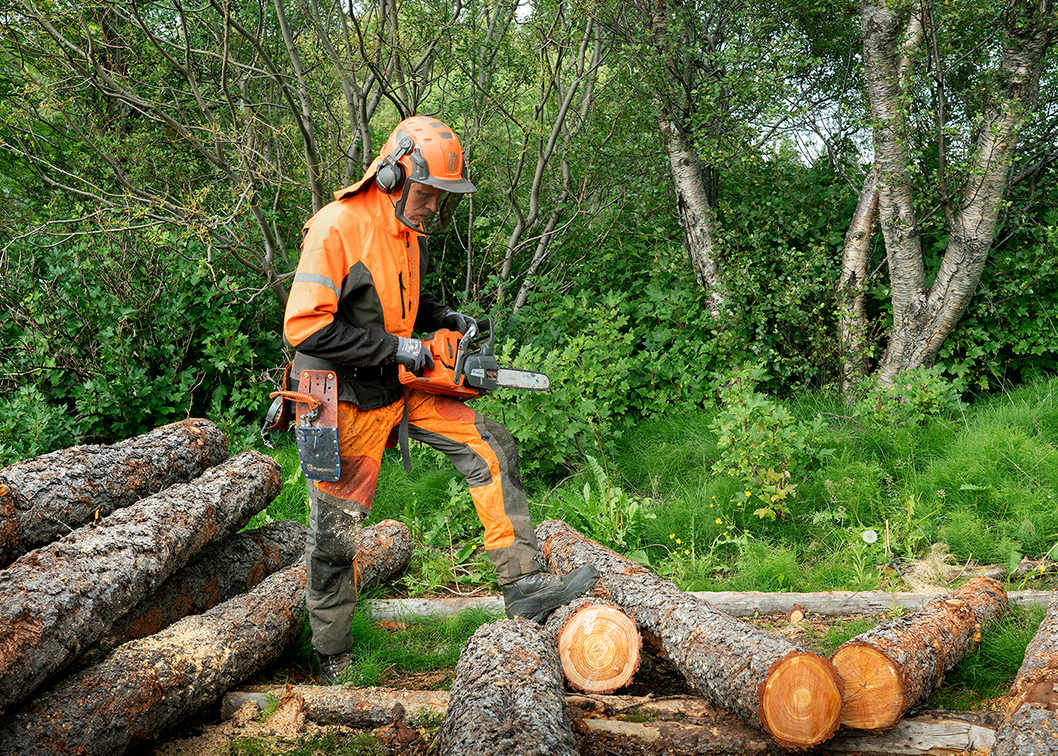4.1 Future Economic Development
The pillars of East Iceland’s economy will be strengthened, with the development of industries guided by the sustainable use of resources. Local knowledge will be enhanced to foster innovation.

Strategy on Key Priorities in Economic Development
H. 1 Growth will be based on the sustainable use of East Iceland’s diverse resources and a circular economy approach.
Efforts will promote environmentally friendly businesses and jobs utilizing the region’s natural, social, and cultural resources. This will include:
Developing activities aimed at reducing resource use, extending resource lifetimes, and preventing waste.
Establishing a green energy park in East Iceland.
Encouraging environmental and quality certification for companies using land, sea, and coastal resources.
H.2 Utilizing and strengthening existing technical knowledge, skills, and innovation in East Iceland by:
Conducting an overview of East Iceland’s human resources to identify opportunities for further development, considering technological changes related to the fourth industrial revolution such as AI, biotechnology, and automation.
Promoting increased collaboration between industries to utilize knowledge across various fields and create new opportunities.
Ensuring access to higher education and vocational training, particularly in core industries and essential community services.
Strengthening research on the environment, economy, society, and culture in East Iceland, and disseminating the findings.
Increasing jobs in creative industries by promoting arts, music, visual arts, performing arts, filmmaking, broadcasting, video game development, and design at all educational levels.
See also chapter 5 on Strong communities
H.3 Enhancing the Role of Arts and Culture in the Economy and on the quality of life
Strengthening business activities in the arts.
Fostering mutual understanding and recognition of shared interests between the cultural and business sectors.
Promoting research on the importance of culture in East Iceland’s economy.
See also chapter 6 on Arts and Culture.

Explanation of Strategies for Key Priorities in Economic Development
Resources of East Iceland and the Circular Economy
East Iceland’s resources lie in its environment, society, culture, and inhabitants. Natural resources such as water, soil, minerals, energy sources, and marine and terrestrial ecosystems are foundational to the region’s habitation and hold opportunities for development. Strengthening human resources to utilize their knowledge, take initiative, and seize opportunities is crucial. The region’s landscapes, history, and cultural life also hold value for product development and marketing.
Promoting a circular economy is essential for future resource use. This involves protecting limited resources, reducing greenhouse gas emissions, and keeping materials in circulation through reuse and recycling. Strengthening the circular economy can create new jobs in repair services, waste management, innovation, and design.1
East Iceland has significant potential for environmentally friendly industries and innovation with green energy.2 Plans are underway to develop a green energy park in Reyðarfjörður, producing renewable fuels to support energy transitions in maritime and land transport. There are also plans to explore the production of carbon-free fertilizers, reuse heat for district heating, and use oxygen in fish farming.3
Technology, Innovation, and the Fourth Industrial Revolution
Rapid technological changes in recent decades, anticipated to continue, are referred to as the fourth industrial revolution. These changes will impact the lives and work of East Iceland’s residents, emphasizing the importance of skill and community adaptability to harness new technologies’ opportunities.4
Efforts have been made to enhance technical knowledge5, creative industries6, entrepreneurship7 and innovation8 in East Iceland. Continued focus on these areas is necessary to ensure the region’s competitiveness.9 Improving access to higher education, boosting research and development, and fostering industry collaboration are essential.10
See also chapter 5.2 on Knowledge and innovation.
Cultural Life and the Economy
Cultural life has extensive economic impacts, including in tourism, technology, education, retail, and services. A vibrant cultural scene is crucial for the economy and quality of life in the region, expected to gain even more importance in the future. Strengthening diverse cultural activities and fostering mutual understanding between the cultural and business sectors is necessary.11

I. Strategy on Core Industries
I.1 Sustaining and strengthening the region’s traditional core industries.
Maintaining the fishing industry as a key sector by:
- Providing good operational areas, harbour facilities, and other infrastructure.
- Promoting full utilization, innovation, and sustainable use of marine resources, seeking new species, both in fishing and farming, for both human consumption and industrial production.
- Research on the marine life in the Eastfjords and its potential changes due to climate change should be encouraged and supported.
- Efforts should be made to enhance the opportunities for small boats to fish in coastal areas.
- Ensure that municipalities have planning authority over bays and fjords and control over public fees related to fisheries and aquaculture.
Agriculture should be maintained as a key industry in the region by:
- Protecting the natural resources that agricultural production relies on, such as soil, good farmland, grazing lands, and water.
- Classifying agricultural land based on cultivation conditions to inform land use planning and decisions regarding types of cultivation, with the aim of protecting land suitable for growing food and fodder.12
- Promoting greater diversity in agriculture, such as through increased cultivation of vegetables, animals, and fodder, forestry, and possibly the cultivation of energy crops and biofuels.
Industry should be maintained as a key industry in the region by:
- Supporting the continuation of aluminum production as one of the cornerstones of the region’s economy.
- Providing good infrastructure for industrial activities, including suitable industrial areas, ports, and other facilities.
I.2 New pillars should be strengthened in the coming decades to enhance the economy of East Iceland, improve living quality and attractiveness of the region, and address global environmental changes.
Food Production: See 4.2.
Forestry: See 4.3.
Tourism: See 4.4.
Explanation of Core Industry Strategies
Fishing
Fishing companies in East Iceland are crucial for the regional economy and are among the largest in Iceland. The municipalities and state derive significant revenue from them, benefiting the community. Sustainable and responsible use of the rich fishing grounds off East Iceland is vital. Research on marine resources is essential due to potential climate change impacts on fish migration patterns.
Icelandic fishing has a strong international competitive position, partly due to significant technological advancements in recent years, leading to fewer jobs in fish processing and related sectors. Thus, there is interest in enhancing full utilization of marine resources in East Iceland to promote value creation and job diversity. There is also interest in other food sectors leveraging the technology and expertise developed in the fishing industry.
Municipalities support the fishing industry with adequate space for operations and good harbor and transportation infrastructure.
Agriculture
Agriculture is a fundamental part of East Iceland’s economy, primarily focused on sheep farming, with significant contributions from dairy farming and some operations involving cattle and poultry.13 Forestry has also been crucial and is expected to develop into a full-fledged industry.14 Additionally, there is extensive experience and knowledge in organic farming of trees and vegetables in East Iceland.
Agricultural production is managed through agreements between the Icelandic government and the Farmers Association of Iceland, ensuring adequate supply, value creation, and efficiency in production. Recent emphasis has been on sustainability, with certain farming sectors aiming for carbon neutrality by 2040.15 Sustainable use of grazing and cultivation land is another challenge, with guidelines in place for classifying agricultural land to protect land suitable for food and feed cultivation.16
Technological changes, such as automation and precision farming, will reduce and transform agricultural jobs, necessitating support for diversified farming and general rural economic activities. The government is exploring possibilities for increasing energy crop cultivation and biofuel production.17
The agricultural system must increasingly adapt to changing consumption patterns and provide information on the origin and content of products to consumers.18

Industry
The economic landscape of East Iceland transformed significantly with the establishment of the Kárahnjúkar Hydropower Plant and Alcoa Fjarðaál aluminum smelter in Reyðarfjörður. These developments created specialized jobs and numerous related service positions. This progress is monitored through Alcoa Fjarðaál and Landsvirkjun’s sustainability projects, managed by Austurbrú.19
East Iceland’s industrial sector is crucial for the national economy, with a quarter of Iceland’s export revenue passing through the ports of Fjarðabyggð.20 This importance could increase further with the continued processing of aluminum in the region, a possibility under consideration over the years.21
East Iceland’s fishing and agriculture industries have built substantial industrial and technical knowledge, offering opportunities for knowledge transfer to other sectors.
Attracting skilled and motivated individuals to work in the region’s industrial companies has been challenging, requiring strengthened ties between the education system and industry and promoting good working and living conditions to enhance quality of life.22
